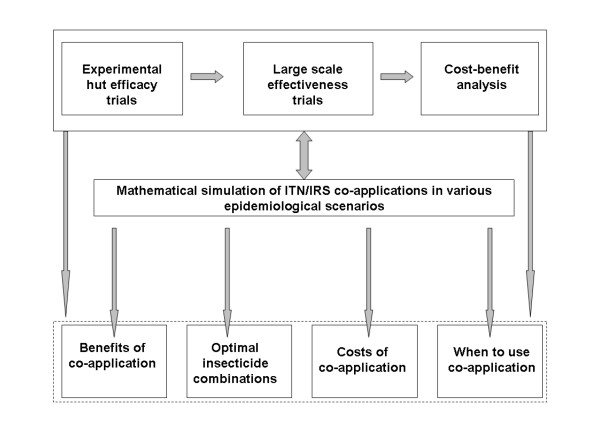Figure 2.
Conceptual sequence of research necessary to generate evidence for or against combined use of ITNs and IRS. From direct measurements in experimental hut trials, efficacious combinations of ITNs and IRS are identified and subjected to community wide effectiveness trials. Data from the effectiveness trials can then be used for cost benefit analyses. Where necessary, the mathematical models can utilize data from all the three studies (efficacy, effectiveness and cost-benefit analyses). Such simulations can: 1) help identify insecticides or combinations of insecticides for ITNs and IRS, which can then be re-evaluated in experimental huts, 2) help strengthen the design and implementation of new effectiveness trials and cost-benefit analyses and 3) enable extrapolation of information on efficacy and effectiveness of combined interventions in different epidemiological scenarios (including places with insecticide resistance). Results of these studies may then be examined to assess potential benefits of co-application, suitable insecticides for the combinations, and potential costs of the co applications as well as to determine when it is most appropriate to use the strategy.

